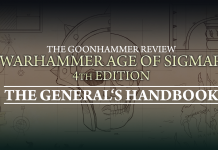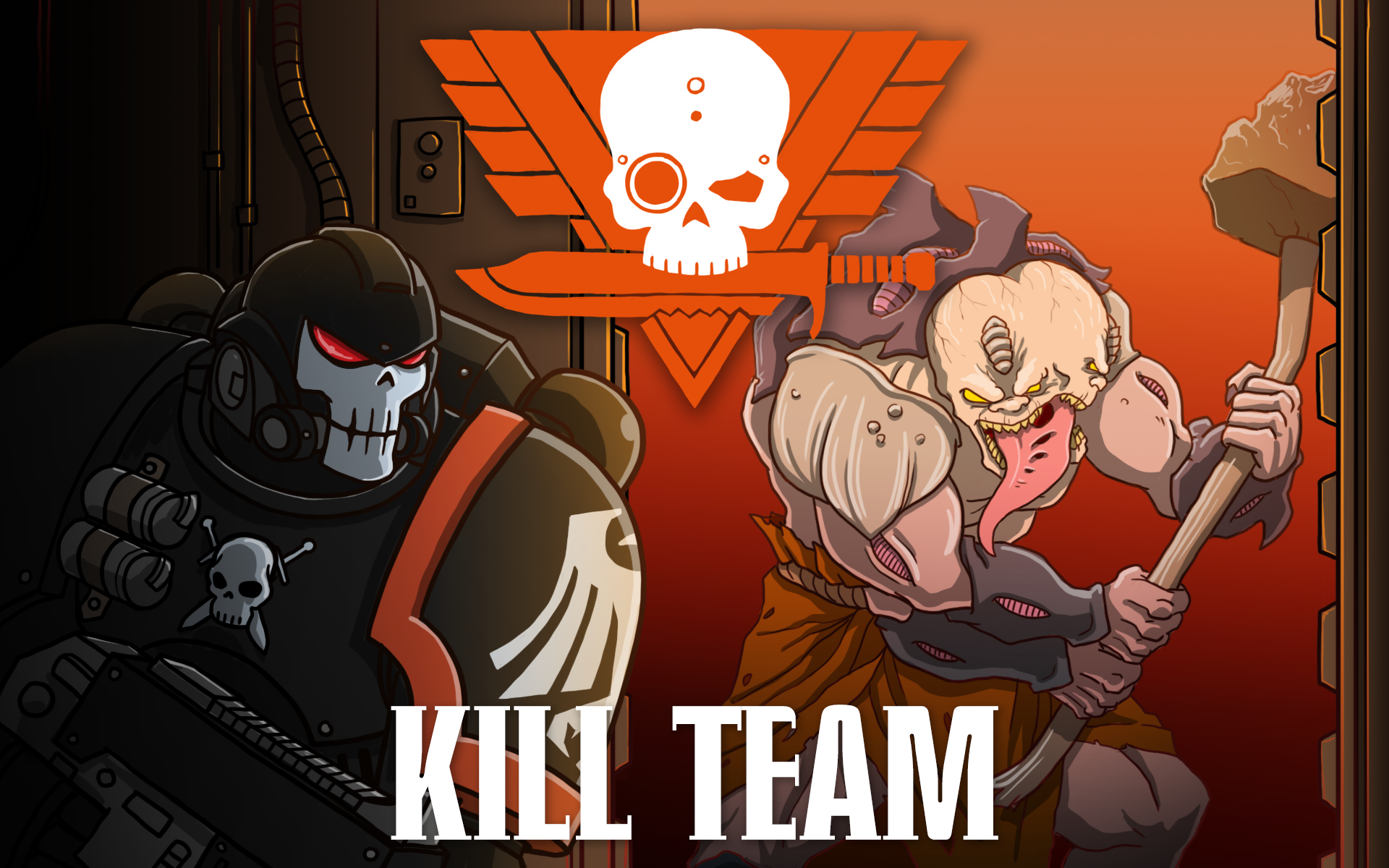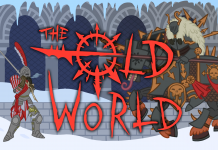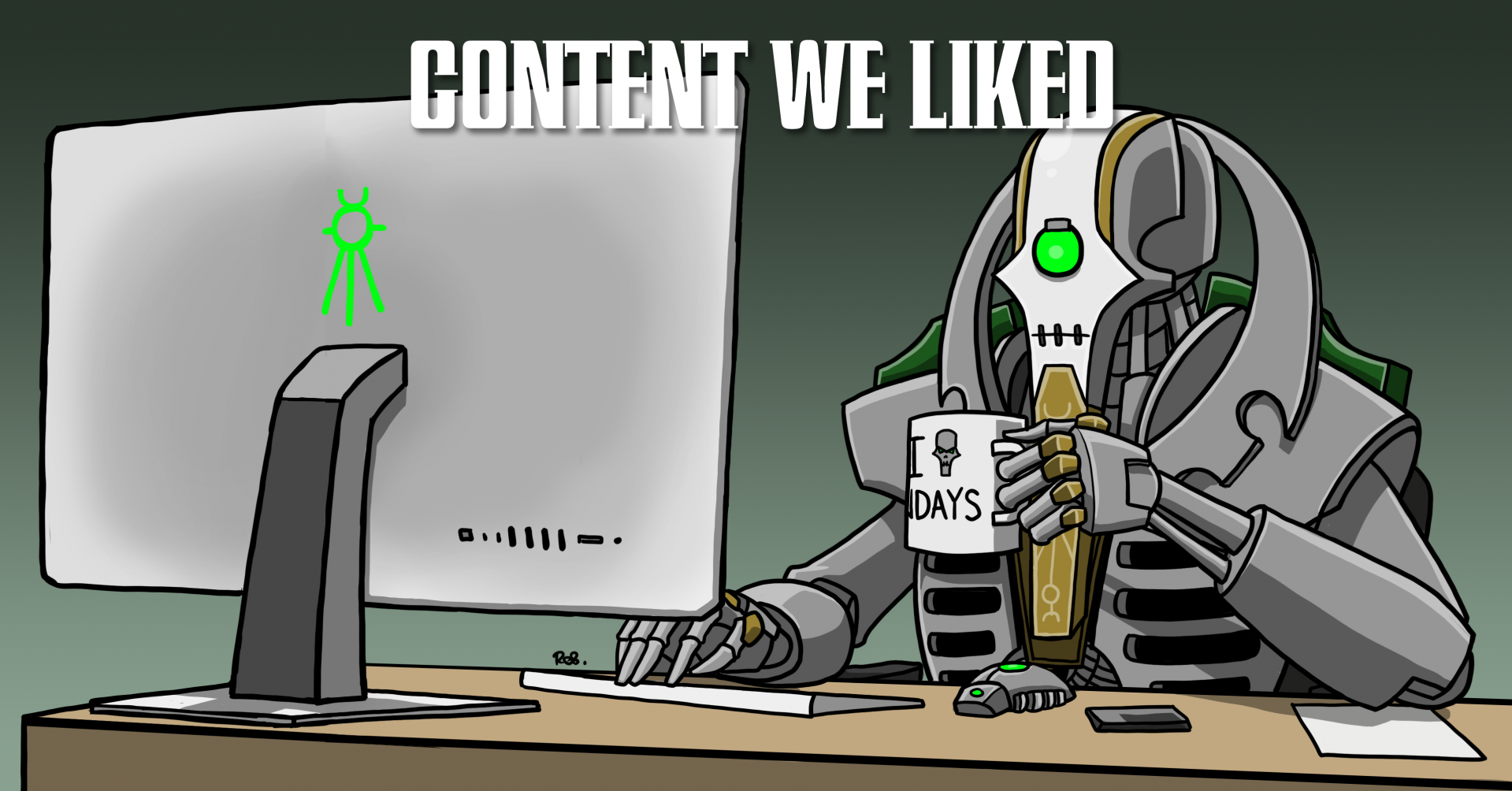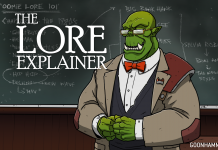Last week, Forge World released an updated version of the rules for Zone Mortalis games to coincide with the release of new plastic Zone Mortalis terrain. In this article, we’ll talk about Zone Mortalis, these updated rules, how to play games of Zone Mortalis set during the Horus Heresy, and briefly look at the best ways to build your own Zone Mortalis board.
The Best Way to Play Horus Heresy
Zone Mortalis is a set of rules intended to recreate battles during the Horus Heresy in “the fatal ground” – the Zone Mortalis itself. These are tightly confined battlefields – filthy sewer systems, claustrophobic warships, or the twisting corridors of a bunker complex. The idea is that you have a restricted, closed-off board filled with tight corridors, heavy bulkheads and small rooms in which to play the game, giving it a similar feel to games of Necromunda. Zone Mortalis can be considered in most ways to be less of a mission set and more an entirely different mode of play for Horus Heresy. The special rules for Zone Mortalis affect everything from how you build your list to how you prosecute your war against the enemy.
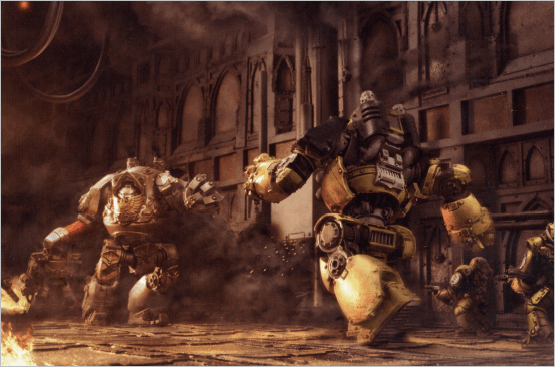
The Rules
The Forge World team have had a set of Zone Mortalis rules freely available in beta for many years, but these have now been polished and finalised. You can find these updated rules here. This pack contains the basic and optional rules for Zone Mortalis, the Force Organisation Charts for building Zone Mortalis forces, and some missions to try out.
In this article we’ll run through of what is available, some tips for play, and then make some recommendations for how to get your gaming tables up to scratch for some Zone Mortalis action!
Games of Zone Mortalis are designed to be played on a 4’ x 4’ battlefield, with around 1,000 points per side (I have personally found up to 1,500 works well, but 1,250 is probably the “sweet spot”). This means, fundamentally, they are quick games – probably around an hour (depending on which additional rules are in use).
Force Organisation
There are three modified Force Organisation charts – Attacker, Defender and Combatant – which come into play depending on the mission type.
There is a different emphasis in Zone Mortalis when compared to the standard 1 HQ and 2 Troops of other Force Organisation charts. You only ever have to bring 1 HQ and, depending on the chart in question, 1 other type of unit, which is not necessarily a Troops choice.
The charts are then limited in other ways – for example, Attackers can’t bring many Heavy Support choices, but do not have to take any Troops, instead being encouraged to load up on Elites. Conversely, Defenders can swarm the battlefield with Troops choices and Heavy Support, but cannot bring many Fast Attack options.
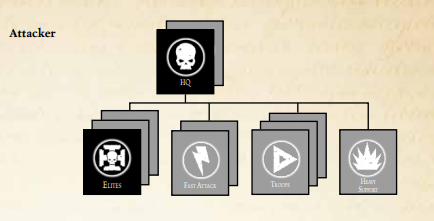
There are some additional, more general, limitations, such as no Vehicles other than Walkers (unless they are less than 4” wide), and no models on a larger than 60mm base (which, in any event, may still be unable to move through certain doors!)
The result is an Infantry and Walker dominated game, as you would expect in this kind of battlefield (try fitting a Spartan into a sewer tunnel…)
It means the armies you end up with are often very different from a “conventional” game. In my personal experience I have found it means certain unit choices which otherwise might not get an airing can really shine – Flamestorm Castaferrum Dreadnoughts is a classic option, but also things like Cyclops Demolition Vehicles or Heavy Flamer Support Squads can be very popular.
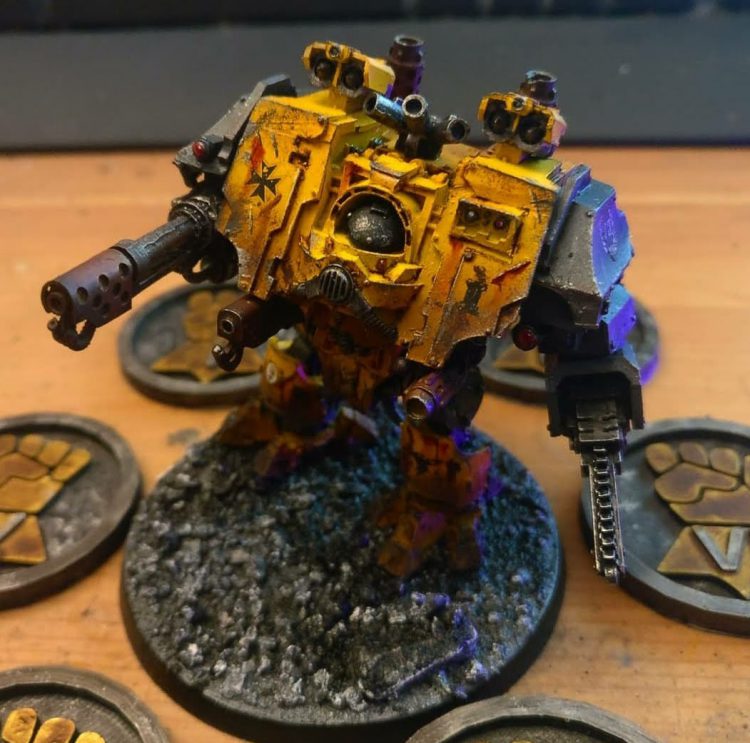
The Battlefield
A Zone Mortalis area can be either part of a board or the entire board – in practice, I have only ever seen it be the entire board, as it can be a bit cumbersome moving “in” and “out” of the Zone Mortalis area during a normal game of 30k (as you will see below, there are a number of Zone Mortalis specific rules to keep track of).
There are rules for how platforms, stairways and doors work – doors, in particular, can be locked or destroyed, adding an additional element to the game. I have had excellent moments where a door was suddenly thrown open to reveal a Heavy Support team who purged a corridor, or a locked bulkhead denied access to enemy close-combat troops for a vital turn, allowing me to pull my men back.
The main difference, however, to how Zone Mortalis plays versus a normal game of 30k is in the way the terrain affects movement and shooting. There is an extra “level” to the list building in Zone Mortalis because of this. By way of example, due to the generally confined battlefield, selecting models with large bases (for example, Terminators) may not be the best idea, as they can struggle to get through doorways and, in a tight corridor, probably won’t all be able to fight in close combat.
Things like Infiltrators and units which can Scout move also take on a new light – there is plenty of line-of-sight blocking terrain in Zone Mortalis, and so being able to deploy units well forward onto the board hidden around corners can be very potent.
The nature of the environment also makes everything Dangerous Terrain for anything using jump packs or bikes (as you would expect), and Deep Striking is especially hazardous – anything scattering into a solid wall or bulkhead will mishap, and takes a -1 to the roll on the Deep Strike Mishap chart. Terminators should be supported by a Nuncio-Vox if they’re joining the fight this way!
The lethal close confines of a warship or bunker mean Template and Blast weapons are particularly deadly – these either gain Shred, or increase their Strength (Strength 6 Heavy Flamers with Shred for Salamanders, anyone?). Templates scattering into walls also “automatically” detonate rather than scattering further, which means they’re generally more accurate – I can hear Death Guard players salivating at the thought of all those grenades from their Grave Wardens…
There is also the concept of Reaction Fire – where Overwatch attacks, with certain weapons, on a successful Initiative check, can be made at full Ballistic Skill. This is absolutely deadly – an Imperial Fist Tactical Squad can unleash a hail of BS5 bolter fire to whittle down the foe, or a Plasma Support Squad can turn any would-be attacker into ash with ease. While it can be mitigated (for example, by charging a unit with multiple squads, where only one will take the Reaction Fire), it is a real game-changer in terms of how you engage in close combat. I have had, sadly, extensive experience of “chancing” a Reaction Fire and losing so many men that my squad was then out of range to charge!
Finally, Sweeping Advances can be re-rolled, and if you Fall Back through your own unit they risk also Falling Back themselves – and remember, there is no “And They Shall Know No Fear” in 30k.
It all adds up to a frenetic, close-ranged brawl, with units coming out of side corridors, flanking each other, and having to “force” heavily defended corridors and rooms, for death or glory!
Optional Rules
There are three sets of optional rules for Zone Mortalis – “Catastrophic Damage – Buried Alive”, “Enemy Unknown” and “Cold Void & Poisoned Air”. These can be used on their own or, if you’re bold, combined together.
“Catastrophic Damage – Buried Alive” is an excellent add on, representing the collapse and destruction of the Zone Mortalis environment as the battle goes on. Perhaps the mighty Ultramarine Tyrant class Cruiser that your Emperor’s Children are boarding has suffered a fatal blow to its plasma reactor, or the labyrinthine bunker complex the Mechanicum are defending amidst the ruins of Hekaton V has taken a direct hit from a Warlord Titan Quake Cannon!
Each player rolls a D6 from Turn 2 onwards, adds the results together, and compares it to a chart – the effects range from dust clouds reducing BS and Initiative of the fighters, to huge chunks of equipment and masonry causing large blasts to impact across the board.
I can personally attest to how fun this modification to the rules is – it creates an element of desperation as you try to complete your objectives before everything collapses down on you, and means no one can get too far “ahead”. In one memorable game, a lone Night Lords Assault Marine stood proud on the objective at the end of the game, only to be unceremoniously crushed by a rogue air conditioning unit – it really spices up the narrative!
“Enemy Unknown” requires a bit of work to get right, but can be some of the tensest and most enjoyable games of Zone Mortalis. You swap your units for “blip” counters, representing Auspex returns showing enemy contacts – but only you will know which “blip” represents which unit until they come into line of sight and are revealed. Only when the unit is “revealed” are the models actually put on the table. This is very evocative of tense games of Space Hulk.
For your opponent, until the enemy comes into view, it will therefore be an exercise in deduction and gambling – is that “blip” a Tactical Squad, or a Contemptor Dreadnought? Is it the squad which has a Melta Bomb, or the one which has enough flamers to stop any assault in its tracks?
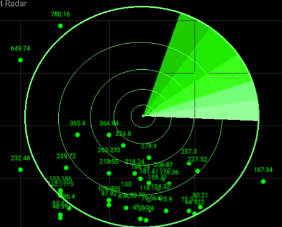
An added bit of fun can be, if the unit goes out of line of sight of the enemy, to replace it again with the “blip” – it is for your opponent to remember what is what! And the truly hardcore (or mad) could do “blind” lists – you have no idea what you’re facing until its front of you!
“Cold Void & Poisoned Air” is designed to replicate inhospitable environments like extreme heat, the void of space, or industrial smog-choked corridors. It is extremely deadly – most weapons gain a modified form of Rending (which is blocked by some upgrades such as 2+ Armour Saves, or Hardened Armour), and weapons which already have Rending can do it on a 5+ rather than the usual 6+. Blast weapons also become Pinning.
I have had experience of using this modifier and, while it makes for a very bloody environment, it is perhaps a bit unbalanced in favour of shooty armies – when combined with Reaction Fire, assault forces can find it quite hard to get a purchase.
However, if both players know in advance that they’re fighting in this environment (perhaps because it is part of a narrative campaign) then it can make for some interesting list building to mitigate the environmental effects. The Attacker might lean towards Terminators and other heavily armoured units to negate the Rending, while the Defender might give a second look to some lesser-used choices like Quad Heavy Bolter Rapiers, which aren’t often picked but now have Rending to go with their higher Strength.
Missions
Finally, the rules contain a pair of basic Missions – the Zone Mortalis Assault Mission and the Zone Mortalis Encounter Mission.
The Assault Mission uses the Attacker and Defender Force Organisation Charts, with varying objectives (either agreed or randomly determined), including destroying/defending specific objectives or trying to control parts of the board to force a breach.
The Encounter Mission uses the Combatant Force Organisation Chart, with similarly random or pre-agreed objectives.
The primary differences in the missions are in the way the forces deploy – in the Assault Mission you have quarters of the table occupied by the Attacker and Defender (which can, in some circumstances, be next to each other rather than traditionally opposite!), whereas the Encounter Mission has a more conventional board-edge deployment. It makes for a different ebb and flow to the game, and if random objectives are used it can encourage taking balanced lists which can adapt to any situation.
Tips for Zone Mortalis
Zone Mortalis is quite different from a conventional game of Horus Heresy – for one thing, both sides deploy quite close to each other, and there is a lot of moving around to get into position for charges and shooting. It is easy to ‘hide’ units, and due to the points levels you won’t see many “death star” units (which, due to the confined nature of the board, will be easier to trap and avoid).
My first piece of advice for this type of game is, when building your list, make sure you have something that can handle a Contemptor Dreadnought (or, if you have a Mechanicum opponent, Castellax Battle Automata). Contemptors and Castellax are reasonably inexpensive – enough that you can fit one or two into a Zone Mortalis force without too much discomfort – and are incredibly resilient (or invulnerable) unless you have the right tools to deal with them. This makes them very popular choices in this game mode.
Your counter could be Contemptors of your own, for example, but it could be other things which you might otherwise overlook. Assault Marines may seem strange, given the dangers of using Jump Packs in the Zone Mortalis environment, but if you take a squad of 10, give them all Melta Bombs, and only use the Jump Packs to re-roll their charge and get Hammer of Wrath, then you have a potent anti tank and anti infantry unit for not many points. 10 men in a conventional game would be easy to kill, but the ability to hide them in Zone Mortalis changes this.
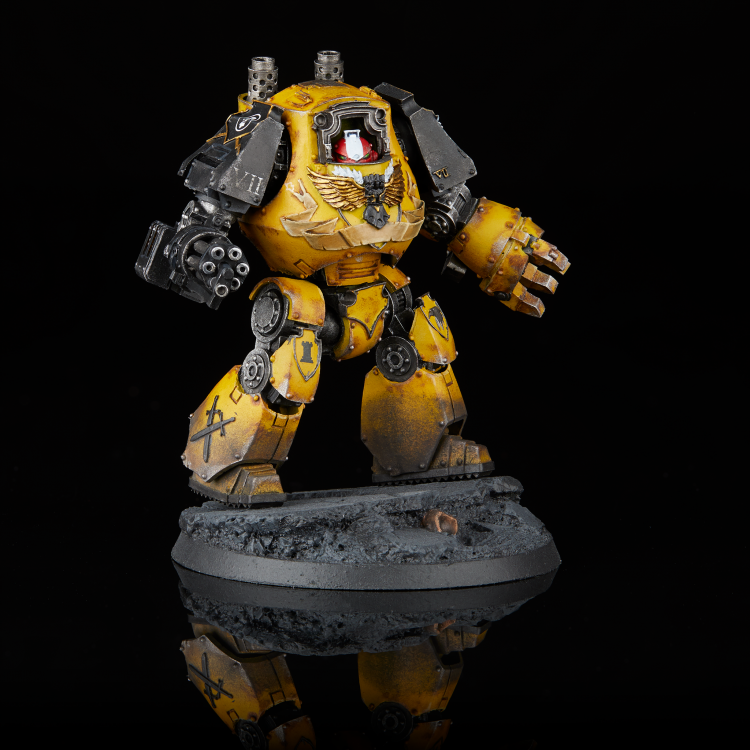
Another choice might be a Tactical Support Squad with Melta guns. The low points count of Zone Mortalis means Armoured Ceramite is a luxury and not always seen, and the close ranged nature of the battle means these can really shine, even if there are only 5 of them.
The second piece of advice is to remember that positioning is very important in Zone Mortalis. Study the board, and work out where choke points and key intersections are. If a model’s base can’t fit in a space, it cannot move there in Zone Mortalis – the walls are impassable terrain. This means a Contemptor or Castellax might be stuck plinking away with its guns rather than ripping into combat if you have got it trapped behind a narrow door! This can be hugely advantageous if you “choke point” units and stop them being able to make multiple charges, or all attack in close combat.
I can recall charging a unit of Salamanders Firedrakes into my opponent’s squad of Emperor’s Children Breachers – I lost the extra attack on the charge due to the Breacher Shields, and found, to my horror, that only 2 Firedrakes out of the squad could even attack as it was so tight – a measly 4 Thunder Hammer attacks compared to the full complement of attacks from my opponent’s squad. On paper it looked like an easy victory – not so in practice.
The third and final piece of advice is to look at Zone Mortalis as a perfect way of getting into the Horus Heresy for new players.
1,000 pts is very easy to put together – a short sample list is below for the Imperial Fists:
- Legion Champion with Paragon Blade, Vigil-Pattern Storm Shield, Terminator Armour
- 5 Cataphractii Terminators with 4 Vigil-Pattern Storm Shields, Teleportation Transponder, Chainfists & an Assault Cannon
- Contemptor with Havoc Launcher, Chainfist, Kheres Assault Cannon
- 10 Tactical Marines, Extra Close-Combat Weapons, Nuncio-Vox, Artificer Armour/Power Fist/Melta Bomb Sergeant
- 6 Heavy Support Squad Marines with Heavy Bolters
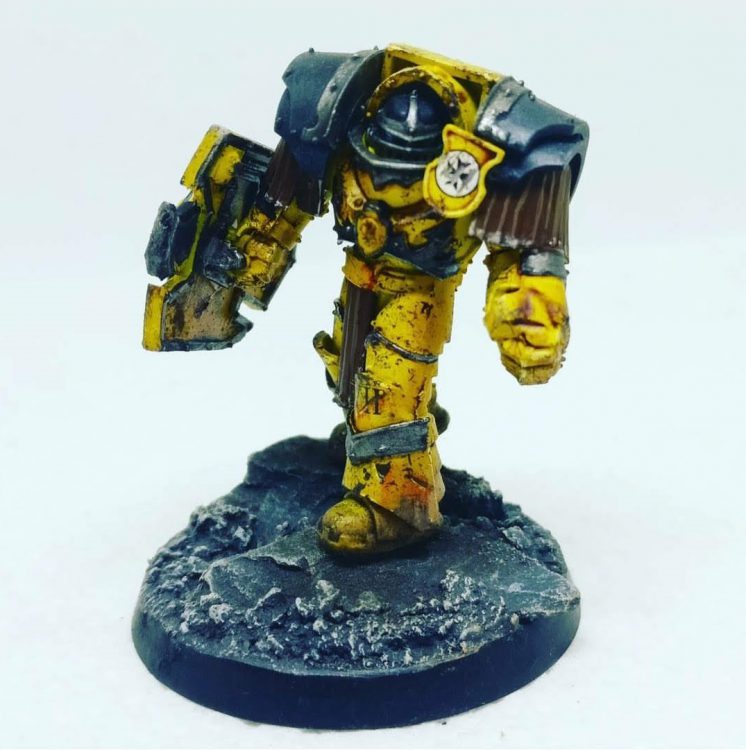
This comes out to 1,000 pts on the nose, using models which are all plastic base kits combined with some resin upgrade kits from Forge World – which means it will not be that expensive in terms of real financial cost (although, if you build this list, please use the Resin Contemptor and not the abomination that is the plastic one!)
The list is designed to have a 6 man, hard hitting 2+/3++ Terminator unit which has the option to deep strike using the Nuncio-Vox to guide them in (if you’re feeling brave). The Contemptor is a huge threat when combined with this, and the Tactical Marines and Heavy Support Squad make use of the Bolter Drill rule for the Imperial Fists, so they are BS5 at range (and, for the Tactical Marines, on Reaction Fire as well). The extra combat weapons on the Tactical Marines make them able to lend some punch in close combat if required.
Overall this should be able to take on most opponents and cause them trouble, but the list is relatively slow with no Infiltrators or Scouts – however, this arguably fits the Imperial Fist theme quite well.
And the best thing? This list is an easy “core” for expanding up to 1,500 and 2,000 pt games of Horus Heresy outside of Zone Mortalis. Add another 10 man Tactical Squad, a pair of Rhinos, max out the Heavy Support Squad and add a second Contemptor for a 1,500 pt list (again, mostly plastic kits). From there, look into larger vehicles and a Super Heavy, and you’ll be at 3,000 pts in no time!
How to build a Zone Mortalis Board
The biggest issue with playing Zone Mortalis is getting a board together – it needs a lot of terrain by default, even for a 4’ x 4’ offering, and it needs to be a certain type of terrain, ideally – corridors, pillars and bulkheads to “build” rooms and a layout. While you can use books and coke cans on your mum’s kitchen table, this is 2019 and we’re in a golden age of the hobby. You can do better.
Note that, as a preliminary, you can play Zone Mortalis on any kind of themed board – for example, I have been to an excellent event called “The Jungles of Akkar” which used specially shaped jungle terrain which was impassable to make “corridors” and “rooms” for Zone Mortalis. The terrain just needs to be sufficiently dense and create the right shaped open spaces on the board.
That aside, thankfully there are a number of official and third party offerings which can provide a solution. I set out some of the more popular ones below, but if you have another option which isn’t listed, feel free to put it in the comments!
Forge World – Realm of Battle Zone Mortalis Tiles
These, for a long time, were the only options available, but are now out of production as of October 2019.
Large, made of resin, and not modular (i.e. the walls were fixed onto the boards – you had to rotate and swap the entire tiles to rearrange the battlefield), these were viewed as quite unwieldy to store and play with. Unfortunately they also had a reputation for warping and miscasts, which for an expensive Forge World product (from memory, ~£300 for a 4’ x 4’) is quite frustrating.
In any event, these are no longer available outside of eBay or Facebook selling pages. While they look fantastic, I would honestly not recommend them – these days there are far better, most cost effective and modular options available.

Death Ray Designs – Deadbolt’s Derelict
This is something I have not personally used, but I have seen mentioned in a lot of different places online.
http://deathraydesigns.com/product/deadbolts-derelict-corridors-bundle/
It is a set of MDF wooden corridors and junctions, which can be used for Necromunda or Zone Mortalis. The bundle I have linked above is not that cheap – $130 – but appears to be a “complete” set which would comfortably fill a standard sized board. There are a lot of companion pieces of terrain in the same style available which is a big bonus, from crates to vending machines.
The product, from online reviews, appears to be well made and sturdy, albeit a bit of a chore to put together (but then, in fairness, what large terrain project isn’t?)
Like the Forge World tiles, these are supplied unpainted – I would strongly recommend having a good think about how you are going to tackle this task, as there will be a lot to do if you are covering a 4’ x 4’ board.
Keeping it simple is my recommended approach, and, as it is MDF, it would be sensible to apply a thin coat of matt varnish or watered down PVA glue to start with, to make sure the paint adheres nicely rather than getting “absorbed” by the MDF.
The last thing to note is that these will need some sort of gaming mat to put them on – Necromunda card tiles are an effective and inexpensive option which would look great. The walls would not be fixed to this, so you need to take care not to knock into them and disrupt the layout.
Wargame Model Mods – Maze of the Dead
This is similar to Death Ray Designs but is a bit more complicated, as these come with fully detailed MDF “tiles” to put the walls on, and are fully magnetic and modular with LED underlighting. The end result is very similar to the old Forge World tiles.
https://www.wargame-model-mods.co.uk/mazeofthedead.html
Each tile and piece of corridor has magnets you glue into the bottom, allowing you to reconfigure the board as you go and minimises the ever-present issue in a Zone Mortalis game of the terrain getting shifted about as you try to get your hands into the narrow corridors to move units.
There is a lot of customisation options here – I recommend visiting the website to see some of the styles available. They include obvious “Necron” and “Chaos” types, and you can mix and match the tiles, walls and LED colours as well.

You buy the tiles in 1’ x 1’ sections (so for a 4’ x 4’ you’re looking at 16 tiles). In my opinion, given the magnetisation and LED add-ons and the detail on these, they are competitively priced – a 4’ x 4’ with tiles, LEDs and walls (with magnets included) will set you back £240.
I have a set of these (3’ x 3’ built and mostly painted, with the rest still in boxes languishing in my backlog) and I can say they are excellent to play on.
The one thing to bear in mind is that these are very time consuming to build and paint. If you’ve ever magnetised, say, an Adeptus Titanicus model or a vehicle, imagine magnetising a 1’ x 1’ tile which has 36 magnets in it, and then doing that 16 times – 560(!) magnets, and that is before you do the walls as well. It is a serious project, and not for the faint hearted. The same caveats regarding MDF as outlined above apply here as well.
It looks amazing when it’s done though, and there are a number of addons and modifications you can buy from the same website (e.g. gantries, stairs) to keep expanding the boards as much as you like!
TT Combat – Iron Labyrinth
This is a similar offering to Death Ray Designs and Wargame Model Mods above – MDF corridors and corners, with options for doors and other add-on pieces.
https://ttcombat.com/collections/industrial-hive/products/iron-labyrinth-bundle
This option has been used and tested by folks on Goonhammer, who only have good things to say about it.
It appears to be competitively priced – from the descriptions a £65 set will fill a 2′ x 2′ area comfortably, so it is a comparable price to Death Ray Designs for a 4′ x 4′. The add ons like Warp Gates and Stairs in MDF on the website also look great.
The same caveats will apply to the Death Ray Designs offerings – you’ll need a mat, they won’t be fixed to the board, and it will all need to be assembled and painted which can be time consuming.
Games Workshop – Necromunda Plastic Zone Mortalis (Dark Uprising)
Hot on the heels of Forge World discontinuing the resin options, Games Workshop have announced a range of terrain for Necromunda which is, in effect, plastic Zone Mortalis terrain (and is being marketed as such by GW). The Internet has somewhat lost its mind about this but I would, unfortunately, advise a bit of caution at this stage.
There is a large range here – it is not just corridors and doors, but includes gantries, stairs, and other bits of terrain. From the promotion photographs it looks fantastically detailed.
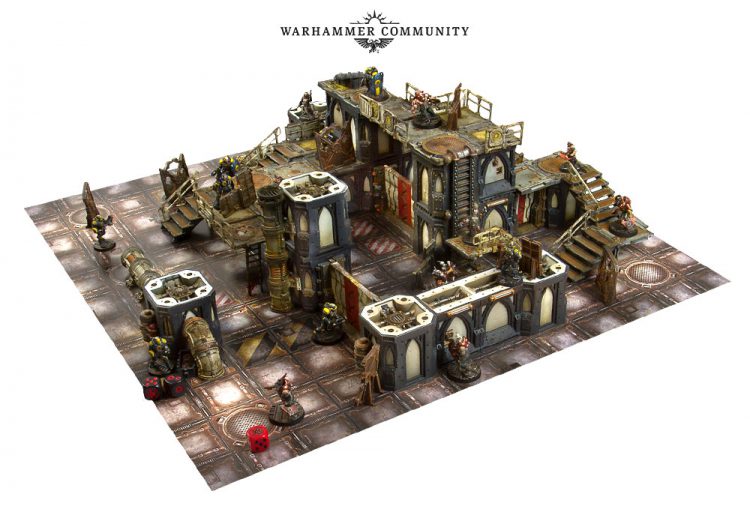
The drawbacks, however, are that currently it is not clear how much terrain you actually get in the box relative to a 4’ x 4’ board – the board in the promotional photographs looks “full”, but not sufficiently so for a 30k 1,000 pt game of Zone Mortalis, and it is not clear what size the board being shown is.
I would not be surprised if what is being shown is smaller than 4’ x 4’, so you would need to bear this in mind when you think about how much you need.
The other issue is, in classic GW fashion, you can currently only get this terrain in the “Dark Uprising” box (yet to be released) – which looks to be rather pricy ($290 at full retail). It also contains a lot of stuff which you wouldn’t want to buy twice, like gangs and counters (or even once, if you don’t play Necromunda). If everyone is buying this box for the terrain, you can be sure the resale value of these extra bits will be fairly negligible for some time as the market will be saturated, so caveat emptor.
The other issue is that, while GW have announced plastic tiles for this terrain to sit on, they don’t appear to be packaged in “Dark Uprising”, but are available separately.
Therefore, for the foreseeable future, it is very awkward to put together anything comparable to the old Forge World boards or a Maze of the Dead board – you will end up probably with Necromunda card tiles with the plastic on top.
This is, of course, absolutely fine and will do the job, but it isn’t what everyone has in mind for what they want as the end result. So, for now, I would think carefully before loading up on the plastic for Zone Mortalis purposes.
Note that, knowing GW, this will change in due course and they will sell the Zone Mortalis bits separately as a box, packaged with the tiles or not. But, also knowing GW, it will probably cost an arm and a leg… watch this space.
Conclusion
I could wax lyrical about Zone Mortalis for hours – it is a fantastic way to play Horus Heresy, and a great way to get into the game due to the size of the armies involved and the quick game lengths. The possibility for narrative gameplay is endless.
I will end this article with one thought that has been rattling around my mind for cool narrative game – Zone Mortalis where you have hordes of plague zombies attacking both sides as they fight across the board, swarming from side corridors and locked laboratories. Oh, the possibilities…

![[40k] Competitive Innovations in 10th: Death Beckons pt.3](https://d1w82usnq70pt2.cloudfront.net/wp-content/uploads/2020/01/Analysis_Banner.png)
